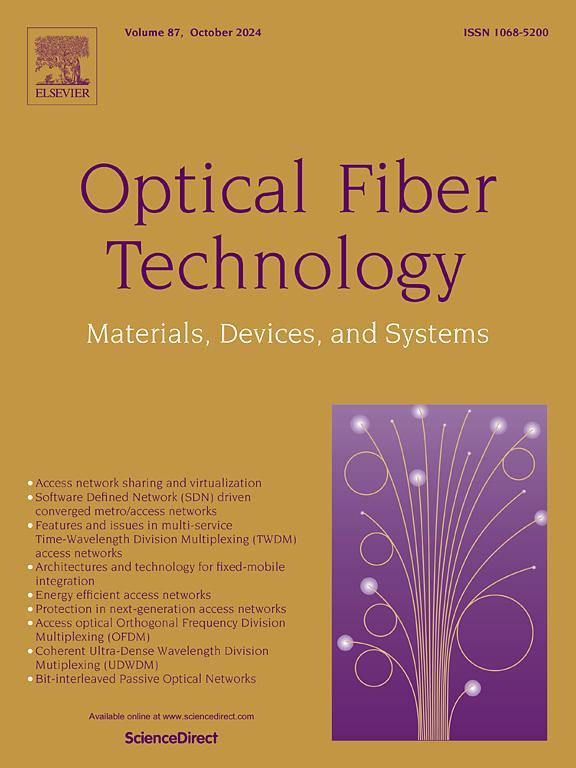三光纤光栅级联法布里-珀罗结构中基于游标效应的应变灵敏度增强光纤传感器
IF 2.7
3区 计算机科学
Q2 ENGINEERING, ELECTRICAL & ELECTRONIC
引用次数: 0
摘要
游标效应作为一种提高测量灵敏度的有效方法,在过去的十年中引起了广泛的关注。在本研究中,我们介绍并验证了一种利用级联法布里-珀罗干涉仪(fpi)的灵敏度增强光纤应变传感器,该干涉仪是通过串联三个光纤布拉格光栅(fbg)构建的。实验结果表明,该结构的应变灵敏度高达23.3 pm μ /−1,比单传感FPI的灵敏度1.45 pm μ /−1提高了约16倍。除了展示高灵敏度之外,我们还通过改变腔长系统地分析了传感器的检测极限和动态范围,突出了关键的性能权衡。实验结果与仿真结果吻合较好,验证了该设计的实用性。所提出的传感器制造简单,成本效益高,非常适合在低资源环境或多路传感器网络中部署。本文章由计算机程序翻译,如有差异,请以英文原文为准。
Optical fiber sensor with enhanced strain sensitivity based on the Vernier effect in a three-FBG cascaded Fabry–Perot configuration
The Vernier effect has attracted significant attention in the past decade as an effective method for improving measurement sensitivity. In this study, we introduce and validate a sensitivity-enhanced optical fiber strain sensor utilizing cascaded Fabry–Perot interferometers (FPIs), which are constructed by inscribing three fiber Bragg gratings (FBGs) in series. Experimental results show that the proposed structure provides a strain sensitivity of up to 23.3 pm , which is approximately 16 times higher than that of the single-sensing FPI, which has a sensitivity of 1.45 pm . Beyond demonstrating high sensitivity, we systematically analyze the sensor’s detection limit and dynamic range by varying the cavity lengths, highlighting key performance trade-offs. Experimental results show strong agreement with simulations and validate the practical utility of the design. The proposed sensor is simple to fabricate, cost-effective, and well-suited for deployment in low-resource environments or multiplexed sensor networks.
求助全文
通过发布文献求助,成功后即可免费获取论文全文。
去求助
来源期刊

Optical Fiber Technology
工程技术-电信学
CiteScore
4.80
自引率
11.10%
发文量
327
审稿时长
63 days
期刊介绍:
Innovations in optical fiber technology are revolutionizing world communications. Newly developed fiber amplifiers allow for direct transmission of high-speed signals over transcontinental distances without the need for electronic regeneration. Optical fibers find new applications in data processing. The impact of fiber materials, devices, and systems on communications in the coming decades will create an abundance of primary literature and the need for up-to-date reviews.
Optical Fiber Technology: Materials, Devices, and Systems is a new cutting-edge journal designed to fill a need in this rapidly evolving field for speedy publication of regular length papers. Both theoretical and experimental papers on fiber materials, devices, and system performance evaluation and measurements are eligible, with emphasis on practical applications.
 求助内容:
求助内容: 应助结果提醒方式:
应助结果提醒方式:


